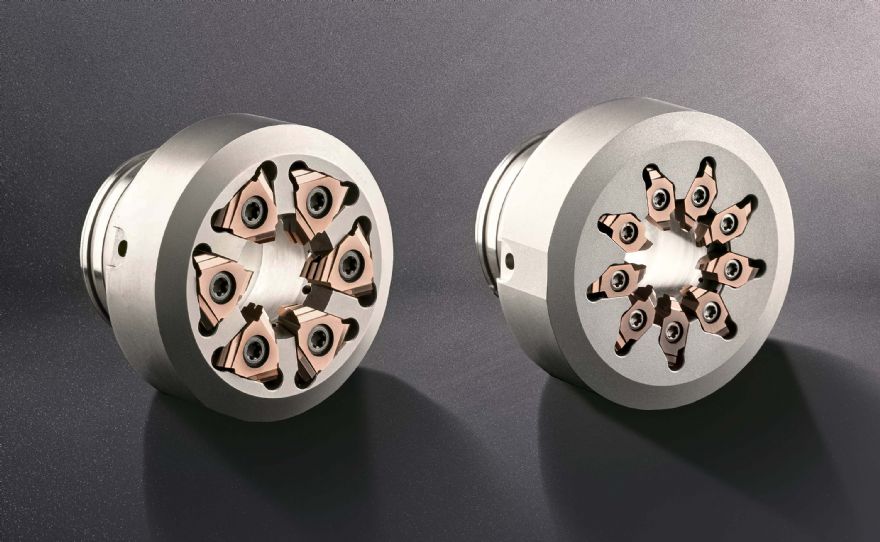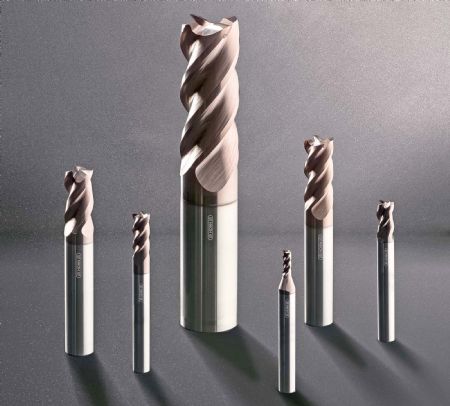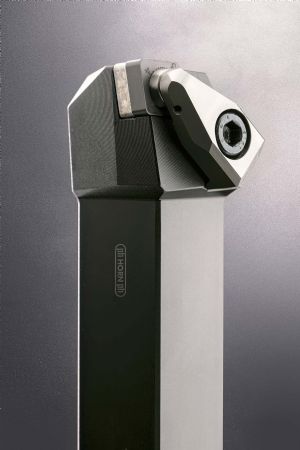 The new SG3P carbide grade from Horn enables shorter thread whirling cycle times thanks to higher cutting values, including when processing materials that are difficult to machine. The grade is available for all Horn thread whirling systemsPaul Horn
The new SG3P carbide grade from Horn enables shorter thread whirling cycle times thanks to higher cutting values, including when processing materials that are difficult to machine. The grade is available for all Horn thread whirling systemsPaul Horn, the solid carbide tooling, carbide insert and tool-holder manufacturer headquartered in Tübingen, Germany, has supplied more than 200,000 special tooling solutions over the years and currently offers 25,000 standard products, including five due to be introduced to the UK and Irish markets at
MACH 2024, taking place 15-19 April at the NEC, Birmingham (Hall 6, Stand 210). Wholly-owned subsidiary, Ringwood-based Horn Cutting Tools, will explain the reasons behind the launches and will exhibit a broad cross section of its extensive tooling range.
An addition to the Horn Supermini boring, grooving and chamfering system will be announced, a variant with a precision-ground rake face designed for producing ultra-fine bores. The ground cutting edge is free from notches when viewed at a magnification of 200-times and the tool can be used to machine components having an inside diameter from just 0.3mm. Sharp insert geometry ensures process reliability, even with very small infeed and cutting feed rates. A specially developed coating is suitable for stainless steels, non-ferrous metals and other metals.
The Supermini Type 105 system insert requires only one tool holder for well over 1,000 insert variants, which applies equally to left-hand and right-hand versions. The carbide inserts are available coated or uncoated in various grades for a variety of applications, including hard machining up to 66 HRC. The patented, droplet-shape cross section has a vibration-damping effect and delivers excellent repeatability during insert exchange. Internal coolant supply to the insert increases tool life, enhances cutting performance and improves chip removal. Horn offers the tools with face clamping elements that allow the insert to be changed easily without having to remove the holder from the machine.
High cutting performanceHorn has also developed a new, solid carbide milling cutter range for machining stainless steels, widely used in the food, chemical and pharmaceutical sectors, as well as in the watchmaking and other precision engineering industries. Due to their geometry and efficient chip breaking, the mills are suitable for machining numerous other materials as well. The combination of substrate, macro and micro geometry, and IG3 coating exhibits high cutting performance and long tool life. The coating in particular offers high temperature resistance for machining steels alloyed with chromium, nickel and molybdenum.

The tools (pictured left) are offered in two types from stock. The DSHPR variant is suitable as both a finishing and a roughing tool and the geometry is adapted for trochoidal machining and plunging. Type DSR, with its very sharp cutting edge geometry and short design, is suitable for very small parts and unstable workholding conditions, such as are frequently encountered in the medical and watchmaking industries. In the DSHPR line, all tools are available with four teeth and in diameters from 2-20mm, while the DSR has three teeth and is offered in diameters from 1-10mm.
A new, high-performance, carbide grade from Horn, the SG3P, presents enhanced possibilities in terms of performance and tool life when whirling medical screws. It enables shorter cycle times for thread production thanks to higher cutting values, including when processing materials that traditionally are difficult to machine. In addition, the combination of an ultra-fine-grain carbide powder and a high-temperature-resistant coating raises process reliability and improves component quality. In-house coating of the inserts enables fast delivery times and the carbide grade is available for all standard Horn thread whirling systems.
The production of bone screws must be carried out using a metalcutting process, as the material for this type of screw must not be compressed, as is the case when thread rolling, for example. Titanium in particular, which is widely used in the human body due to its biocompatibility, tends to burn if the material is unduly compressed. As a thread cutting process for the medical industry, thread whirling on Swiss-type lathes has been a standard procedure for many years.
A long overhang can cause a turning tool to oscillate when boring internal geometries. In addition to causing chatter marks on the surface of the machined component, the vibrations can lead to a significant reduction in tool life. For unfavourable length-to-diameter ratios, even damped boring bars may vibrate under certain conditions. To help mitigate these difficulties, Horn has introduced a boring bar with adjustable damping so it can be set to match the amplitude of the oscillation generated by the machining process. Precise adjustment enables vibration-free turning, resulting in better surface quality of the machined component and a significant increase in insert life.
Process reliabilityThe damping element, a carbide rod supported in O-rings, is adjusted from the outside by turning a screw to fine-tune the pre-tension of the rings. It allows the boring bar to be set accurately to minimise the vibration that is predicted to occur during a machining cycle. As standard, Horn offers the boring bars from stock in length-to-diameter ratios of 5:1 and 8:1. Higher ratios are available as special tools. In the case of grooving, Horn offers the S224 double-edged system. The manufacturer's BK 224 cassette ensures a stable interface between the boring bar and insert. To increase process reliability further, the tools have an internal coolant supply.

Horn is also launching a new tool range for manufacturing brake discs economically (pictured right). It includes solid CBN (cubic boron nitride) ISO inserts, mainly used for cast iron machining, and CBN-tipped full-radius and shaped inserts. The grade has no metallic bonding phase and therefore has the highest hot hardness of all cutting materials. Horn offers the solid CBN ISO S turning insert with eight cutting edges for roughing and finishing. Cutting speeds of well over 1,000m/min, depths of cut of several millimetres and feed rates up to 0.7mm/rev are typical values. Stable tool carriers are included in the offering. Depending on the operation and metal removal rate, in excess of 1,000 cast iron brake discs can be machined per insert corner.
Additionally, Horn has introduced two different tool solutions for machining the heat dissipation grooves in the discs. The CBN-tipped S117 profile grooving insert is ideal in terms of cutting speed and longevity for large batch production. During the process, each groove is produced in just under 2sec in a single operation. For greater flexibility, Horn's S229 full-radius, CBN-tipped inserts offer the option of copy turning the grooves in around four seconds.
Regrinding and re-tipping are possible with both types. The frictional connection between the carbide thrust pad and the insert is via a defined annular surface, preventing compressive stresses on the insert. Engagement of the thrust pad in the bore of the insert pulls it into the seat of the tool holder, preventing clamping errors and increasing precision.